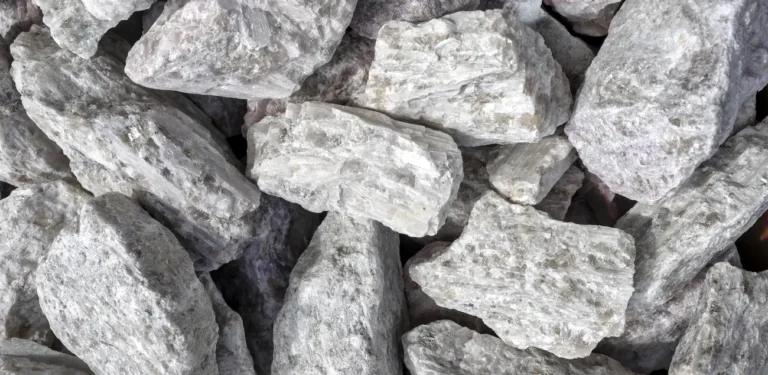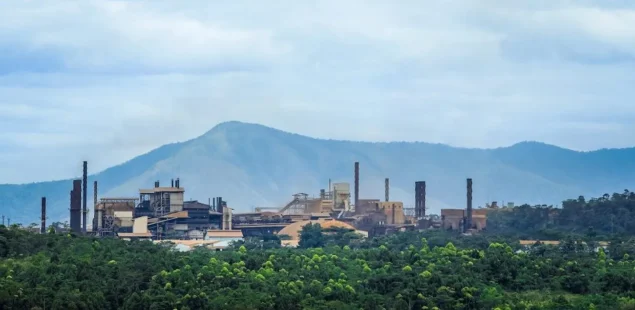
Fastmarkets, a London-based commodity intelligence firm specializing in metals and mining market analysis, forecasts that China will surpass Australia as the world’s largest lithium producer by 2026, marking a fundamental shift in global battery metal supply chains. Chinese mining operations are projected to extract 8,000-10,000 metric tonnes more lithium than Australian competitors next year, representing a dramatic reversal from 2023 when China ranked as the world’s third-largest lithium producer behind Australia and Chile.
Australian Production Cuts Drive Market Realignment
Australia maintained its position as the world’s largest lithium producer since overtaking Chile in 2017, but sustained price declines have forced widespread production curtailments and project delays across the continent. Lithium carbonate prices collapsed from peaks above $80,000 per tonne in late 2022 to approximately $9,700-10,200 per tonne by August 2024, their lowest levels since 2021. This 88% price decline triggered operational suspensions at multiple Australian facilities, including Core Lithium’s Grants mine in January 2024 and Arcadium Lithium’s Mt Cattlin operation.
Major Australian producers including Albemarle reduced output at the Kemerton lithium processing facility, resulting in over 300 job losses, while IGO and Tianqi Lithium halted operations at their joint-venture Kwinana refinery in Western Australia due to production issues and poor economics. The industry requires lithium prices around $18,000 per tonne to support profitable operations, according to Core Lithium executives, significantly above current market levels.
Chinese Lepidolite Mining Drives Production Growth
China’s lithium production expansion centers on lepidolite mining in southern provinces, particularly Jiangxi, where abundant hard-rock deposits provide feedstock for domestic processing facilities. Lepidolite extraction costs exceed brine-based production methods used in South America but offer greater supply security and processing control for Chinese battery manufacturers. The mineral contains higher impurity levels including thallium and tantalum, creating environmental challenges but enabling rapid capacity expansion.
Chinese battery giant CATL operates one of the largest lepidolite mining operations, temporarily suspending production in September 2024 before resuming operations in February 2025 as market conditions stabilized. The Chinese government’s support for domestic lithium production, combined with pressure from local municipalities to maintain employment, has encouraged continued operations despite poor profitability across much of the sector.
Long-Term Projections Show Chinese Dominance
Fastmarkets projects Chinese lithium mining output will reach 900,000 metric tonnes by 2035, compared to Australia’s 680,000 tonnes, Chile’s 435,000 tonnes, and Argentina’s 380,000 tonnes. This expansion reflects China’s broader strategy to control critical mineral supply chains, with the country already dominating mining or refining of more than half the minerals classified as critical by the US Geological Survey.
China currently processes approximately 70% of global lithium refining capacity, converting raw materials into battery-grade lithium carbonate and lithium hydroxide. Fastmarkets forecasts this market share will decline to 60% by 2035 as other countries develop domestic processing capabilities, but Chinese control over upstream mining will provide continued supply chain advantages.
Market Recovery Supports Investment Outlook
The global lithium market is transitioning from oversupply conditions that characterized 2023-2024 toward balanced supply-demand fundamentals. Fastmarkets projects market surplus will narrow to just 10,000 tonnes in 2025 before shifting to a 1,500-tonne deficit in 2026. Electric vehicle sales reached 16.5 million units globally in 2024, representing 28.5% growth, with China accounting for 86% of the increase.
Global lithium demand is projected to expand from current levels near 1.2 million tonnes to 3.2 million tonnes by 2034, driven by electric vehicle adoption and energy storage system deployment. The lithium mining market valuation is forecast to grow from $4.2 billion in 2025 to $8.5 billion by 2035 at a 7.2% compound annual growth rate.
Geopolitical Implications Shape Supply Security
China’s emergence as the dominant lithium producer occurs amid escalating trade tensions with Western countries seeking supply chain diversification. China implemented export restrictions on gallium, germanium, and antimony to the United States in December 2024, demonstrating willingness to weaponize critical mineral supplies for geopolitical leverage. Similar restrictions on lithium exports could significantly impact global battery supply chains given China’s growing market control.
Western governments have responded with initiatives including the US Inflation Reduction Act and European Critical Raw Materials Act, providing incentives for domestic lithium processing and alternative supply development. However, the timeline for meaningful supply diversification extends well beyond the current decade, leaving global markets dependent on Chinese production growth.
Company Background and Market Context
Fastmarkets operates as a leading provider of commodity price assessments and market intelligence for metals, mining, and energy sectors, serving over 1,000 companies globally with pricing benchmarks and analytical services. The company’s lithium market analysis draws on data from major producers including Albemarle Corporation, Sociedad Química y Minera de Chile, Tianqi Lithium, and Ganfeng Lithium, representing the majority of global production capacity.
Chinese lithium producers have expanded rapidly through both domestic resource development and international acquisitions, with companies including Tianqi Lithium acquiring stakes in Australia’s Greenbushes mine and Chile’s SQM. The integrated approach combining mining, processing, and battery manufacturing provides cost advantages and supply security for China’s dominant electric vehicle industry, which produced over 60% of global EV sales in 2024.
Lithium serves as an essential component in lithium-ion batteries powering electric vehicles, energy storage systems, and consumer electronics, with no viable substitutes for most applications. The metal’s unique electrochemical properties enable high energy density and long cycle life, making it indispensable for the global energy transition toward renewable power and electric transportation systems.



